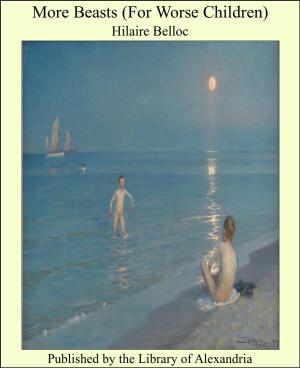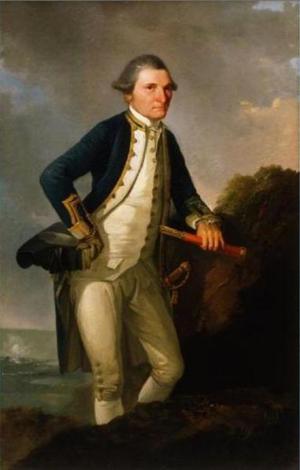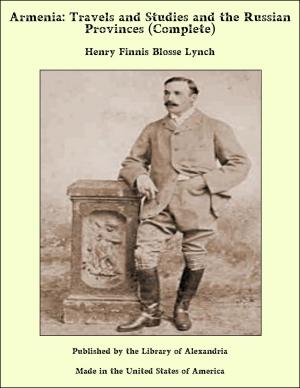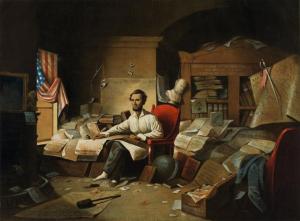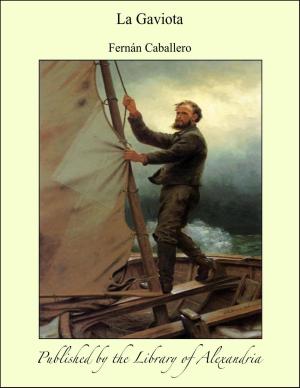| Author: | Abbé N. De Montfaucon De Villars | ISBN: | 9781465573216 |
| Publisher: | Library of Alexandria | Publication: | March 8, 2015 |
| Imprint: | Language: | English |
| Author: | Abbé N. De Montfaucon De Villars |
| ISBN: | 9781465573216 |
| Publisher: | Library of Alexandria |
| Publication: | March 8, 2015 |
| Imprint: | |
| Language: | English |
The Comte De Gabalis is a sacred text for Rosicrucians and spiritual adepts. It is composed of five discourses given by a Count or spiritual master to the student or aspirant. It was anonymously published in 1670 under the title Comte De Gabalis. The meaning suggests the Count of the Cabala as the text is cabalistic in nature. The "Holy Cabala" is mentioned explicitly throughout. The first English translation was rendered in 1680. Only in later publishings did the name Abbé N. de Montfaucon de Villars become attached to this work as being its author. Nevertheless, the importance of who the Comte actually is, is hinted at and among Spiritual societies and groups, it is held to be 'The Polish Rider' -- as he rode westward. At the beginning of the text is a painting by Rembrandt titled The Polish Rider. This painting can be viewed at the Frick Collection, New York City. However, those there who attend to this painting are not aware of who the 'Polish Rider' is. Rosicrucian adepts and members of certain spiritual organizations, such as the "I AM" Activity or Saint Germain Foundation, believe that it is Sir Francis Bacon — who wrote the Shakespeare plays, employing the pen name "William Shakespeare" — earlier in his illustrious career. Therefore, Francis Bacon at a later date, and just prior to 1670, would have given five discourses under another another pen name 'Comte De Gabalis'. This personage, it is held, disappeared for a time before returning again before the public with a new and final name 'Sanctus Germanus' which means "Germain to" or "Pertaining to the Saints". Today, this name is widely known and recognized as being the Ascended Master Saint Germain. Highlights in this work include prints by Rembrandt, scroll of The Birth of Jesus as related in the Koran, explanation of famous stories and histories such as Melusine, so forth. In English editions published by The brothers, an extensive commentary by Lotus Dudley was included. The commentary is simply a means of assisting the reader to understand the points being made in the text which are historical and based in fact. Thus, it is considered a work of nonfiction. However, to an everyday reader, it is often considered a novel or work of fantasy. Wikipedia.org
The Comte De Gabalis is a sacred text for Rosicrucians and spiritual adepts. It is composed of five discourses given by a Count or spiritual master to the student or aspirant. It was anonymously published in 1670 under the title Comte De Gabalis. The meaning suggests the Count of the Cabala as the text is cabalistic in nature. The "Holy Cabala" is mentioned explicitly throughout. The first English translation was rendered in 1680. Only in later publishings did the name Abbé N. de Montfaucon de Villars become attached to this work as being its author. Nevertheless, the importance of who the Comte actually is, is hinted at and among Spiritual societies and groups, it is held to be 'The Polish Rider' -- as he rode westward. At the beginning of the text is a painting by Rembrandt titled The Polish Rider. This painting can be viewed at the Frick Collection, New York City. However, those there who attend to this painting are not aware of who the 'Polish Rider' is. Rosicrucian adepts and members of certain spiritual organizations, such as the "I AM" Activity or Saint Germain Foundation, believe that it is Sir Francis Bacon — who wrote the Shakespeare plays, employing the pen name "William Shakespeare" — earlier in his illustrious career. Therefore, Francis Bacon at a later date, and just prior to 1670, would have given five discourses under another another pen name 'Comte De Gabalis'. This personage, it is held, disappeared for a time before returning again before the public with a new and final name 'Sanctus Germanus' which means "Germain to" or "Pertaining to the Saints". Today, this name is widely known and recognized as being the Ascended Master Saint Germain. Highlights in this work include prints by Rembrandt, scroll of The Birth of Jesus as related in the Koran, explanation of famous stories and histories such as Melusine, so forth. In English editions published by The brothers, an extensive commentary by Lotus Dudley was included. The commentary is simply a means of assisting the reader to understand the points being made in the text which are historical and based in fact. Thus, it is considered a work of nonfiction. However, to an everyday reader, it is often considered a novel or work of fantasy. Wikipedia.org

